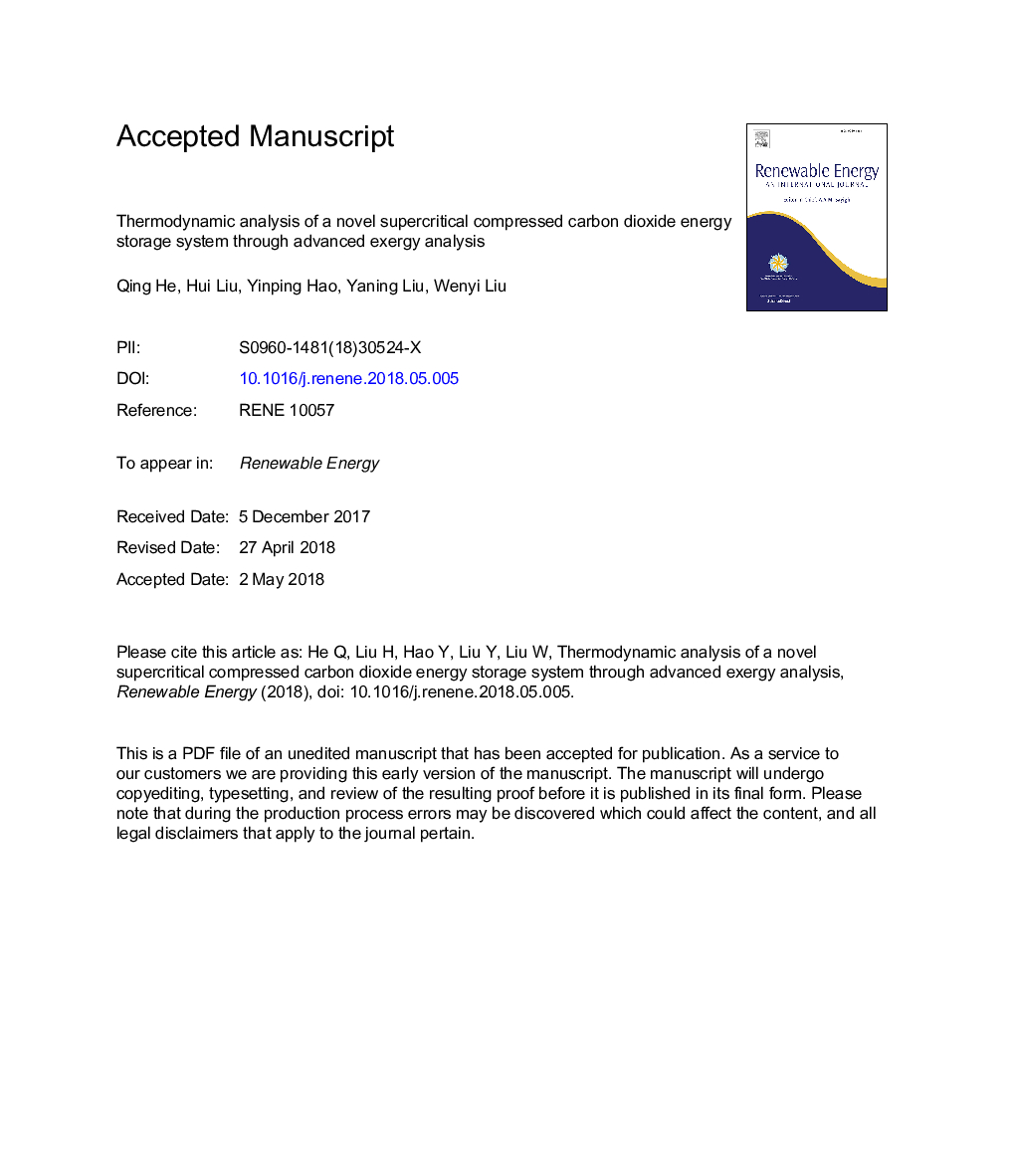| Article ID | Journal | Published Year | Pages | File Type |
|---|---|---|---|---|
| 6764165 | Renewable Energy | 2018 | 47 Pages |
Abstract
To reveal the sources of energy-saving potential of each component and compare the thermodynamic properties of the compressed air energy storage (CAES) system and the supercritical compressed CO2 energy storage (SC-CCES) system, most related works have been done using conventional exergy analysis. However, conventional exergy analysis cannot reveal the thermodynamic interactions among components. Therefore, conventional and advanced exergy analyses are applied to evaluating the CAES and SC-CCES performances in this paper. In addition, sensitivity investigations are conducted to evaluate the influence of decision variables on the performances of CAES and SC-CCES. The results show that the SC-CCES exergy efficiency is 57.02%, which is preferable and performs better than that of CAES (50.86%) and the interactions among different components are not strong since the endogenous exergy destruction rates of the components are larger than the exogenous exergy destruction rates in CAES and SC-CCES. Sensitivity analyses show that a larger efficiency of compressor, turbine, and combustor improves the SC-CCES and CAES performances. The effects of pressure drops in high pressure reservoir in SC-CCES are similar to those in storage cavern in CAES. Improving the performance of reservoir throttle valve itself is an effective way to improve the SC-CCES and CAES performances.
Related Topics
Physical Sciences and Engineering
Energy
Renewable Energy, Sustainability and the Environment
Authors
Qing He, Hui Liu, Yinping Hao, Yaning Liu, Wenyi Liu,
